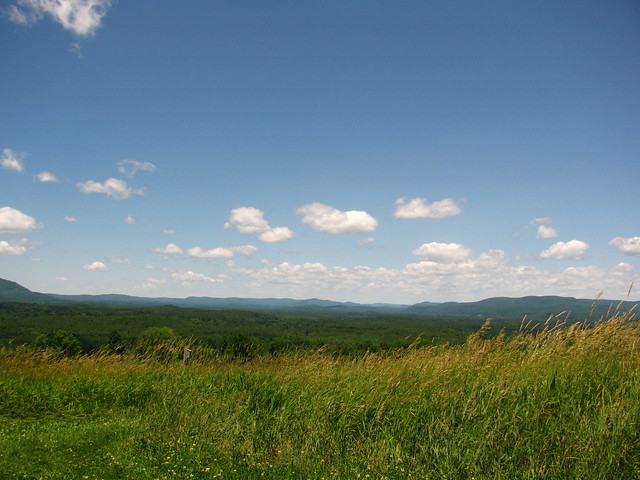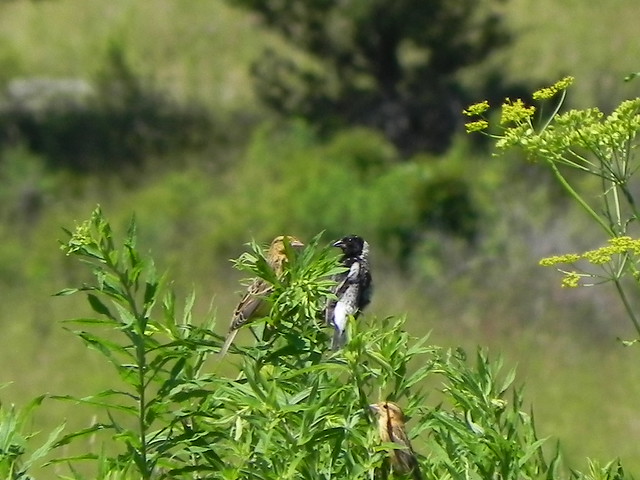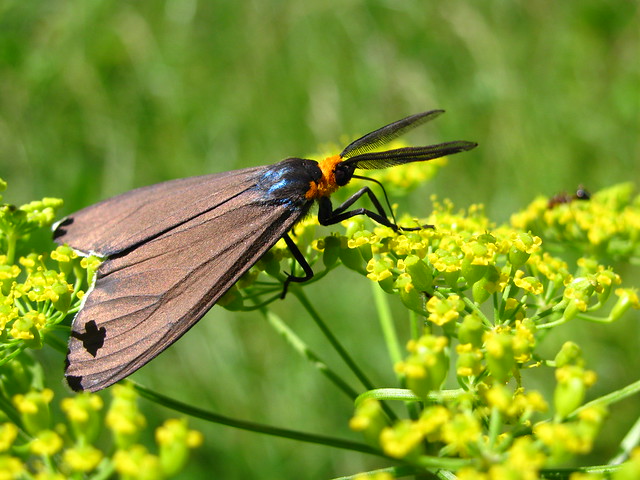(I haven’t been able to do much birding these past two months—life got in the way, unfortunately—so here is a post that I meant to publish back in July! One last taste of summer before autumn sets in for good.)
Bartholomew’s Cobble lies at the foot of the Berkshire Hills in southwestern Massachusetts, just east of the Taconics. Being just a 10-minute drive from Falls Village, it’s a place that I visited countless times over the course of my childhood—but rarely as an adult, and never as a birder. A couple of summers ago my girlfriend interned at the historic house on the reservation, and whenever I picked her up in the evenings, I would always see at least one person with binoculars scanning the field or craning their necks up to the top of the trees. But I never got around to birding the Cobble myself. That finally changed this summer.
When I drove up to Sheffield one Saturday morning in early July, I had one thing on my mind: bobolinks. I had never seen one before, and while not rare, these distinctive grassland singers are increasingly threatened by habitat loss, and their numbers have been declining across the United States over the last couple of decades. Just my luck, then, that the hayfields on top of Hurlburt’s Hill and between the Ashley House and Weatogue Road are home to Massachusetts’ largest nesting population!

Protecting this grassland habitat is an important part of the management plan put forth by the Trustees of Reservations. At Bart’s Cobble, as is the case with other known nesting habitats, mowing is timed to occur at the end of the breeding season, generally by early August. Although it may seem innocuous to some, the timing and frequency of haying has been identified as one of the primary causes of the decline in bobolink numbers. But it is a fine line to walk: hay too early or frequently and you risk destroying the nests and unfledged young of grassland birds (not just bobolinks, but eastern meadowlarks and savannah sparrows, as well); hay too late or infrequently and local farmers are jeopardizing their harvests—and their livelihoods.
Before heading out from the visitor center, we asked the ranger on duty about the current numbers. He told us that he tallied at least 50 that morning just walking through the field to do a preliminary count. Good. So we set out for the fields, hats blowing off in the wind, ears and eyes open and searching.

Casting my eyes over the hayfield, I quickly spotted a male in fine form, perched atop the swaying grass. And then another…and another…and another. With their straw-colored napes and striking black-and-white plumage, they reminded me of punk rockers in tuxedos. The Billy Idols of the bird world. Much like their red-winged blackbird cousins, female bobolinks more resemble sparrows than your typical icterid, but they are no less lovely. Their heads and breasts are washed in a pale gold, and they blend in easily with the grass. I think they make a fine match.

We counted approximately 30 bobolinks total (generally well balanced between male and female), all the while listening to a heady mix of the birds’ electronic burbling song and the buzz of insects. Above us, a particularly pugnacious red-winged blackbird chased a common raven across the sky, and turkey vultures circled a decidedly…fragrant…carcass in the woods close by. The rest of our walk was populated by the usual summer residents, including indigo bunting, ovenbird, eastern bluebird, eastern wood-pewee, scarlet tanager, tree swallow, and one lovely Virginia ctenucha specimen. But none of them, not even the bunting, matched the bobolink in my book. Rock on.
Boblinks are the best! Thanks for posting this!
Jeff
LikeLike